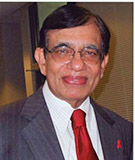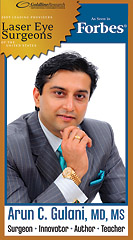
Strengthening your Self-Defense against Diseases – Part II
Is a plant-based diet right for you?

What do you do as a cardiologist when your patient is suffering from extensive coronary blockage, steadfastly refuses bypass surgery? You know he is going to crash any minute without proper intervention. That was my predicament when I was discussing the heart catheterization findings with a 60-year-old patient, Michael L.
“I am afraid of the surgery, doc. One of my friends had major problems after a bypass,” he said.
“It will be very difficult to manage your illness without surgery. You have blocks in all three arteries,” I said pointing out the lesions in the coronary angiogram. Since he wouldn’t relent, we wound up placing multiple stents in the most critical areas and sending him home with several medicines and some serious advice.
“Could you become more a vegetarian?” I asked.
“I will do anything you ask me,” he reluctantly conceded.
With a lot of support from the family and on full anti-lipid and other medications, he stayed on a primarily veggie diet with some added egg white and occasional fish. For the next five years, he did well without any major coronary event and a repeat catheterization during one of his admissions showed some regression of some of his coronary plaques. Yes, some of the lesions indeed improved, just like what Dean Ornish, the famous preventive cardiologist and diet guru has shown in his patients. Eventually though, he did need a bypass surgery and did well.
All of us are generally born healthy but over a period of time our bodies start deteriorating, falling victims to one illness or other. Why? The answer may lie in the studies that looked at the life style and habits of the centenarians in different parts of the world. Termed blue zones, they include Okinawa in Japan, Ikaria in Greece, Sardinia in Italy, Loma Linda, Calif., etc. They all shared one feature in their lifestyle: a diet based on grains, fruits, nuts, vegetables, fruits and sea food. In other words, if you want to have a long life span, you need to embrace a predominantly vegetarian diet – what American Heart Association terms as “plant-based diet.”
Vegetarianism, even veganism, has grown in popularity in recent years, reflected by the explosion of meat-free cookbooks, restaurants that cater to vegetarians, and vegan-friendly products in grocery stores. Although the advice from a vegan cardiologist, Dr. Kim Williams, the president - elect of American College of Cardiology, has elicited diametrically opposite responses – anything from accolades to vehement protests – the essence of the advice is quite valid. Less meat and meat products and more vegetables, egg white and some fish seem to be the acceptable alternative that will add years to your life.
Putting these together, the recommendations are: your diet must be low in saturated fats (less than 15 percent of the total calories), sugar and salt, high in poly and mono-unsaturated fats (fish and fish oil preparations) as well as vegetables, grains, nuts and fruits. Numerous studies have shown that “Eating a Mediterranean diet rich in olive oil and all the ingredients mentioned above, along with low-fat or fat-free dairy products and going easy on red meat, sodas, processed meats and sweets seem to reduce the rate of major cardiovascular events by nearly 30 percent among people at increased risk for heart disease.” For primarily vegetarians, egg whites and soy products can provide enough protein.
One 37-year-old physician told me recently that after she went on a lacto-vegetarian diet, her total cholesterol dropped by 50 points! That’s the power of vegetarian diet. There is also a misconception that a vegetarian diet may lack in certain vitamins like B12 and may not give you enough energy and vitality. Your aim should be to remain healthy and productive as long as you can. One caveat to keep in mind. Avoid trans fats often present in fried, fatty and greasy foods, especially for vegetarians. “The primary dietary source for trans fats is partially hydrogenated oils. Look for them on the ingredient list on food packages,” according to AHA.
Last year, Time magazine ignited a public controversy with its cover story “Eat Butter – Scientists labeled fat the enemy. Why they were wrong.” Please note this has not met with approval from cardiologists who steadfastly believe cutting dietary fat intake still remains a highly effective strategy for reducing coronary heart disease risk. So, what is the final take home point? “Smart diet still remains a potent cardiovascular medicine,” according to Dr. Robert Vogel, the famous professor of Cardiology at University of Maryland School of Medicine. We can all agree on that.
M.P. Ravindra Nathan, M.D., is a cardiologist and Emeritus Editor of AAPI Journal. His book “Stories from My Heart” was recently released. (www.amazon.com or www.bn.com).
Eye Care
Glittering AAPI convention: Gold or Blue?

The recently concluded AAPI convention in Orlando was a treat in every sense of hospitality, attractions, food and glitterati. Kudos to the outgoing president Ravi Jahagirdar and convention chair Amish Parikh.
Even as I stationed myself in being the unofficial and unappointed fashion police, I couldn’t help admire the glamor and fashion all around us not to mention the dazzling colors.
That’s when it struck me. My next column for Khaasbaat!
I am getting ready to teach in Europe and all over India followed by Singapore and Malaysia and presenting more than 31 lectures and the preparation for those does not scare me but the oncoming deadline of my Khaasbaat columns do make me fret.
But now I had it and right in my lap, I was going to write about fashion at AAPI and the most famous dress debate in social media.
It's long been known that certain optical illusions can cause us to see two different shapes in the same image, but the "The Dress" photograph marks the first time that people can see a single image as completely separate colors. Neuroscientists now say that the #whiteandgold versus #blackandblue debate on social media marks the greatest extent of individual differences in color perception ever documented.
To understand "The Dress" phenomenon, it is useful to know how the process of vision occurs in the eyes and associated brain structures. After light enters the eye through the pupil, a crystalline lens focuses light on the retina, a thin layer of neurons at the back of the eye. Neuron photoreceptors within the retina respond directly to light. Rod photoreceptors respond to dim light; cone photoreceptors respond to bright light. Three types of cone photoreceptors are directly activated by different ranges of light wavelengths. The brain then compares the activation of each cone type to automatically interpret color (Lad, Eleonora. "Dress-color Debate Illustrates Complex Eye-brain Relationship). This process involves a complex pathway that starts in the retina and that transmits through the optic nerve to ultimately reach advanced structures in the brain and produce the colors and images we see.
Although the brain deduces color from the physical nature of light wavelengths, color only exists within the brain. The color of an object can be contaminated by surrounding illumination, such as natural daylight or artificial light. This can occur since some light will enter the eye from a particular object, but additional light will come from outside illumination. The brain automatically processes light from the outside world by subtracting the color of illumination the brain expects to be in the environment. Visual cues and points of reference are required for this automatic process.
The = #whiteandgold versus #blackandblue debate occurred because the photograph simply did not contain enough visual cues and points of reference for the visual system to accurately interpret the photograph. The brain must decide to get rid of shorter, bluer wavelengths of light or longer, redder wavelengths. Thus, differences in the perception correlate to the type of light that individuals' brains expect to be in their environment. For example, people who perceive "The Dress" as white and gold may spend most of their time in natural daylight, while people who see a black and blue garment may spend most of their time in artificial light. Not surprisingly, older people and women were more likely to report seeing "The Dress" as white and gold, while younger people were more likely to say that it was black and blue.
I am glad I saw it as Black and Blue, another testimony to my youth!
Arun C. Gulani, M.D., M.S., is director and chief surgeon of Gulani Vision Institute in Jacksonville. He can be reached at [email protected] or visit www.gulanivision.com